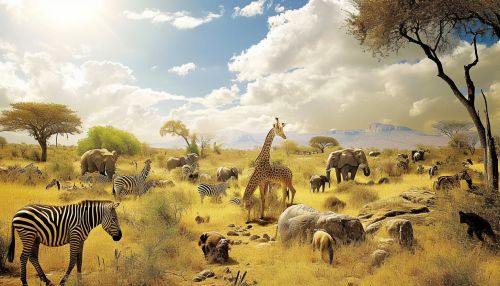Safari Park
Overview
A safari park, also known as a wildlife park, is a large outdoor space where animals roam freely in conditions that mimic their natural habitats. Unlike traditional zoos, safari parks aim to provide a more authentic experience for visitors, allowing them to observe animals in a more natural and less restrictive environment. Safari parks often cover large areas of land and can be found in various parts of the world, from Africa and Asia to Europe and North America.


History
The concept of the safari park originated in Africa, where large game reserves were established to protect and conserve wildlife. The first safari park in the world was the Kruger National Park in South Africa, established in 1898. The idea was later adopted in other parts of the world, with the first safari park outside of Africa, Longleat Safari Park, opening in England in 1966.
Design and Layout
The design and layout of a safari park are crucial in providing a naturalistic environment for the animals and a unique experience for the visitors. Safari parks are typically divided into separate areas based on the type of habitat, such as savannah, forest, wetland, or desert, and the species of animals that live there. These areas are usually large enough to allow animals to roam freely and engage in natural behaviors. Some parks also include walk-through areas where visitors can interact with less dangerous animals, such as birds and small mammals.
Animal Welfare
One of the primary goals of a safari park is to promote animal welfare. By providing animals with large, naturalistic environments, parks aim to improve the physical and psychological well-being of the animals. Many safari parks also participate in conservation breeding programs, helping to preserve endangered species. However, animal welfare in safari parks is a complex issue, with concerns about the impact of human interaction and the adequacy of veterinary care.
Visitor Experience
Visitors to a safari park can usually explore the park in their own vehicles or in park-provided vehicles. Some parks also offer guided tours, providing visitors with information about the animals and their habitats. Many safari parks also have educational programs and exhibits to help visitors learn more about wildlife conservation.
Conservation Efforts
Safari parks play a significant role in wildlife conservation. Many parks are involved in research, conservation breeding, habitat restoration, and public education. Some parks also support conservation efforts in the wild, contributing to projects that protect endangered species and their habitats.
Challenges
Despite their benefits, safari parks face several challenges. These include managing animal populations, maintaining the health and welfare of the animals, dealing with the impact of weather and climate change, and addressing ethical concerns about keeping wild animals in captivity.
